Euro NCAP now announced its new provisional 2026 protocols, which are set to introduce updated requirements for Advanced Driver Assistance Systems (ADAS), driver monitoring, crash avoidance, and post-crash safety. These changes aim to set higher standards for vehicle safety, requiring manufacturers to adapt their validation methodologies and testing strategies to meet the revised criteria.
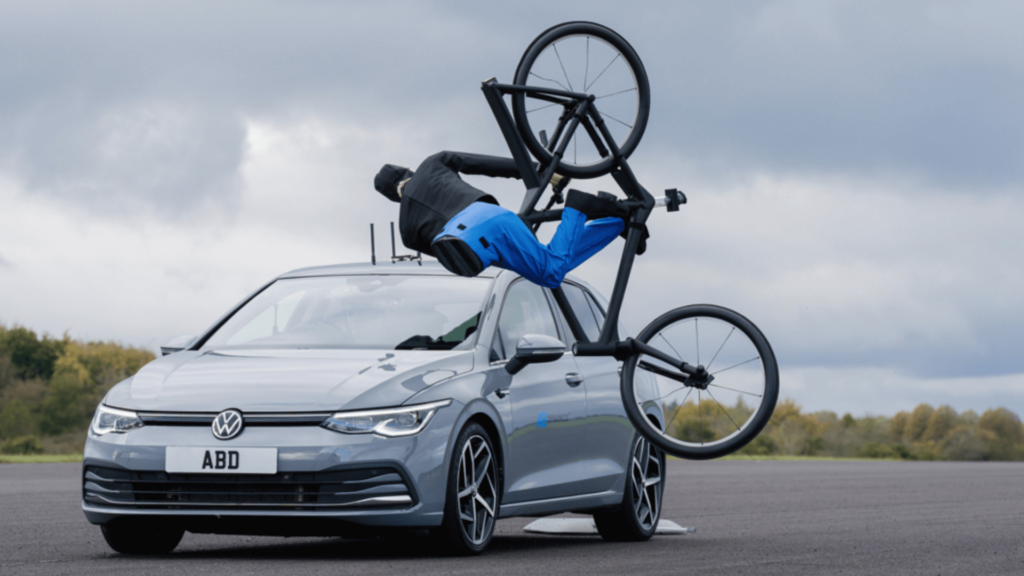
Strengthened driver monitoring and HMI testing
One of the most notable changes in the 2026 update is the expanded assessment of driver monitoring systems. Vehicles will now be required to detect signs of drowsiness, distraction, and potential substance impairment through behavioural analysis, including steering patterns, eye tracking, and reaction times. This places greater emphasis on integrating robust in-vehicle monitoring technologies that provide real-time feedback and intervention.
Additionally, Euro NCAP is introducing Human-Machine Interface (HMI) testing, evaluating the accessibility and usability of essential vehicle controls. This requirement has largely been introduced due to the widespread adoption of touchscreens, which has led to drivers taking longer to perform basic tasks when compared to traditional buttons. This change ensures that drivers can intuitively operate functions such as the horn, windshield wipers, and indicators without unnecessary distraction.
Post-crash safety and EV-specific requirements
The 2026 protocol extends its scope to place new requirements on post-crash safety. Vehicles must now provide standardised ‘Rescue Sheets’ and upgraded eCall systems that transmit critical crash data to emergency services. These improvements ensure that first responders receive timely and precise information to help facilitate the rescue operation.
For electric vehicles (EV), Euro NCAP is introducing additional post-crash safety requirements, including thermal runaway detection systems designed to mitigate battery-related hazards. EVs will need to maintain a minimum of 90 minutes of post-crash safety, providing emergency responders with a critical window to safely extricate occupants.
More rigorous ADAS performance evaluations
Euro NCAP’s new protocols elevate the standards for ADAS reliability and responsiveness. Systems like Adaptive Cruise Control, Speed Assistance, and Steering Assistance will undergo more exhaustive scrutiny to ensure they operate effectively and transparently. These tests aim to prevent over-reliance on automation while reinforcing the role of the driver in maintaining vehicle control.
Enhanced crash avoidance and protection measures
Euro NCAP is broadening its crash avoidance testing to include a wider range of frontal impact scenarios, lane departure events, and low-speed collision situations. As a result, ADAS engineers must develop increasingly sophisticated perception and response systems to detect and mitigate collision risks in more complex environments.
The impact on ADAS development
These changes underscore the increasing quantity and complexity of ADAS testing and validation. Engineers must now ensure that systems perform reliably across a broader range of scenarios, requiring extensive real-world and virtual validation.
At AB Dynamics, we continue to support the industry in meeting these evolving safety standards. Our advanced track testing systems, driving robots, and simulation solutions help engineers rigorously test and validate ADAS technologies, ensuring compliance with the latest Euro NCAP protocols. As the 2026 requirements come into effect, our expertise in controlled, repeatable testing environments will be instrumental in helping manufacturers navigate this evolving landscape.
Euro NCAP 2026 protocol updates summary
Safe Driving
- Driver Monitoring Systems (DMS): Expanded to detect impairments like alcohol or drug use through behavioural indicators, not just drowsiness or distraction.
- Human-Machine Interfaces (HMI): New protocols assess cockpit controls for accessibility, positioning, and tactile feedback.
- Adaptive Safety Features: Allowance has been made for Lane Keeping Assist systems that adjust in real-time based on driver alertness and distraction levels, helping to improve driver acceptance.
Crash Avoidance
- Real-World Scenarios: Evaluation includes frontal impacts, lane departures, low-speed collisions, and emergency interventions while considering driver intention and distraction levels.
- Collision Warnings: Enhanced focus on the acceptability and effectiveness of warnings and emergency interventions.
Crash Protection
- Occupant Diversity: Includes older or smaller occupants in test configurations, with improved protection for children via new Lower Tether systems for child seats.
- Rollover Situations: Expanded occupant protection in rollover scenarios.
- Human Body Models (HBM): Introduction of advanced simulations for diverse occupant morphologies and configurations.
Post-Crash Safety
- Rescue Information: Points awarded for Rescue Sheets and Emergency Response Guides adhering to ISO 17840 standards.
- Advanced eCall Systems: Must transmit detailed crash data, including vehicle location, occupant count, and type of impact.
- Extrication Protocols: Updated procedures for energy isolation, occupant release, and window accessibility. Electric vehicles must include thermal runaway detection systems that prevent hazardous conditions for at least 90 minutes.
For more information on how AB Dynamics can support your Euro NCAP testing, click here.
In 2024, the European New Car Assessment Programme (Euro NCAP) introduced an update to its Assisted Driving Grading system. In this blog post, Leo Evans, Lead Applications Engineer at AB Dynamics, explores what the update means for the industry, how it aims to enhance consumer understanding, and the impact it will have on the development and assessment of assisted driving systems.

Assessing the performance of assisted driving systems
More and more vehicles are coming to the market with increasingly sophisticated assisted driving systems. The new capabilities of these systems can lead to ambiguity amongst some consumers about the level of assistance they provide. Complaints about some assisted driving systems having misleading names, leading to drivers assuming they are in self-driving or autonomous vehicles when they aren’t are well documented. There are also issues where drivers are opting to disable safety systems due to them being perceived as a nuisance rather than providing assistance.
So how are consumers meant to fairly assess the capabilities and effectiveness of these systems to make informed decisions when purchasing a new vehicle?
Euro NCAP’s new Assisted Driving Grading
Assisted driving refers to level 2 on the SAE driving automation scale. These systems assist the driver to varying degrees but critically the driver remains responsible for all aspects of driving. The more sophisticated level 2 systems combine multiple technologies working in tandem, such as adaptive cruise control and automated lane-keep assist.
Typically, these systems are offered as options and as such aren’t considered in the Euro NCAP star rating. In 2018, Euro NCAP began to study the assisted driving systems available on the market and in 2020 introduced a grading programme based on dedicated test and assessment protocols. The grading system has been updated for 2024 and aims to provide consumers with more information on assisted driving systems and enable them to directly compare their performance with other vehicles on the market.
The updated grading system focuses on two key areas: Assistance Competence, which is the balance between Vehicle Assistance and Driver Engagement, and Safety Backup. The sum of the scores in Assistance Competence and Safety Backup is used in a grading system, similar to the five-star safety rating. Vehicles are currently rated ‘Entry’, ‘Moderate’, ‘Good’ and ‘Very Good’.
The ‘Balance Principal’
The grading system uses what Euro NCAP refer to as the ‘Balance Principal’: The Assistance Competence score is the balance between Vehicle Assistance and Driver Engagement. Driver Engagement includes driver monitoring, driving collaboration, system status and consumer information. Vehicle Assistance includes speed assistance, steering assistance and Adaptive Cruise Control (ACC) performance.
The higher the level of assistance, the more the driver must be engaged by the system. The Euro NCAP Assisted Driving grading places a greater emphasis on keeping the driver engaged and this will be the limiting factor in its scoring. Currently, it is separate to Euro NCAP’s safety rating, but they will be linked in 2026 and fully integrated by 2029. This means that vehicle manufacturers striving for a 5-star rating will need to apply the same level of effort to assisted driving systems as they pay to other safety systems.
The growing quantity and complexity of test scenarios
The aim of the updated Assisted Driving rating system is ultimately to improve road safety, which is unquestionably a good thing. However, to assess assisted driving systems more thoroughly, Euro NCAP has increased the quantity and complexity of test scenarios, making achieving a rating more costly and time-consuming. The latest protocol introduces 40 new on track tests requiring driving robots and ADAS targets, doubling the test effort.
The new test scenarios include the ACC Car-to-Motorcyclist, Collision Avoidance Car-to-Motorcyclist, Car-to-Bicyclist, Car-to-Pedestrian and the Lane Support system – lane change with overtaking vehicle test scenarios. This focus on VRUs (Vulnerable Road Users) will thoroughly challenge assisted driving sensor systems. Motorcyclists, for example, can be difficult to accurately detect and classify when in close proximity to other vehicles, potentially getting lost, or being detected as a single object.
These new scenarios are also more realistic and consider the reality where vehicles may not be centred in the lane-ahead. For motorcyclists there is also the possibility of lane-sharing, bringing additional challenges in establishing whether the lane-ahead is clear. The new scenarios include test cases ranging from 0-100% overlap, varying the potential hit point and better reflecting the real-world challenges. In order to score well, assisted driving systems need to slow down progressively and predictably in the presence of hazardous events to deliver a safe and human-like response.
Increasing test efficiency
Euro NCAP testing is already a time and cost-consuming process, and these additional tests place a greater workload on manufacturers and test houses. To increase efficiency of testing AB Dynamics has enabled the automation of all of the relevant tests within the 2024 Assisted Driving protocol through the configurable test groups in the latest version of our RC software. It allows users to quickly and simply create all the new tests included in Euro NCAP’s Assisted Driving protocol. AB Dynamics enables the coordination of all of the ‘actors’ in a scenario, including robot-controlled vehicles and ADAS targets, allowing the test protocol to be fully defined and executed through a single ecosystem.
Without robotic control of the vehicle, the cut-in scenarios are particularly difficult to orchestrate. Timing when and how the cut-in vehicle should begin its manoeuvre so that it finishes the lane change at precisely the right time relative to the vehicle under test is very complicated. AB Dynamics’ software automatically calculates the trajectories and synchronises the test vehicle and applicable ADAS targets.
Conclusion
Euro NCAP's update to its Assisted Driving grading system marks a significant step forward in enhancing consumer awareness and understanding of the capabilities and limitations of assisted driving technologies. It provides consumers with a clearer picture of how these systems perform and encourages manufacturers to prioritise driver engagement and safety.
The expansion of test scenarios, although demanding for manufacturers and test houses, ensures that vehicles are evaluated under more realistic conditions, leading to better reflection of their performance in real-world situations. The quantity and complexity of testing is only going to increase as assisted driving systems become more advanced. As a result, improving efficiency is increasingly important to all parties in the test industry.
For more information on how AB Dynamics can support your AD programme, contact us.
For the first time, Euro NCAP’s 2020 Automatic Emergency Braking (AEB) test protocol allows for the possibility of evasive steering to avoid a collision. Emergency Steering Support (ESS) systems assist the driver’s steering input, altering the vehicle path to potentially avoid a collision.

If a potential collision is detected, Emergency Steering Support systems can act much later than conventional AEB (limited to braking alone), whilst still avoiding a collision. This is because at higher speeds its often more effective for a vehicle to steer around rather than brake to avoid a stationary or slow-moving hazard.
For vehicle manufactures, ESS systems provide enhanced safety whilst reducing the occurrence of false positives (unwanted intervention). Because ESS systems can act much later, unnecessary and premature braking can be avoided which would otherwise be an annoyance to consumers.
Emergency Steering Support systems must only intervene when there is intent from the driver. Typically, this means the driver must initiate the turn, but the ESS system can then take over applying sufficient torque to rapidly steer around the hazard. Testing ESS systems therefore needs precise control of the steering so that the system can be triggered repeatably on approach of a hazard. The testing can be easily accomplished using AB Dynamics' driving robots that not only allow for precise path-following control of a vehicle, but also a multitude of options for triggering defined steering inputs, simulating the panic input from a driver in response to an impending collision.
By combining resources with Euro NCAP test labs BASt and Thatcham, and alongside leading vehicle manufactures, AB Dynamics' driving robots have helped to develop a method for testing ESS.
A direct comparison of vehicle performance with and without ESS can now be made, thanks to the repeatability afforded by driving robots.
The two videos show the difference in performance when ESS is active, compared to when it is disabled. In both cases identical steering control is provided by AB Dynamics' robots whilst approaching the Global Vehicle Target. The stark contrast is evident – these technologies really can help to save lives by preventing collisions.
Car-to-pedestrian accidents are common in urban environments. To address these accident scenarios Euro NCAP have been testing and rating automatic emergency braking systems designed to prevent or mitigate collisions with pedestrians.
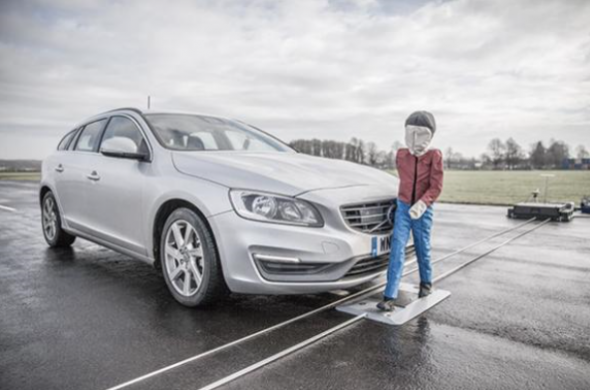
The first Euro NCAP test procedure was introduced in 2016. Since its introduction the test procedure’s scope has been extended to encompass protection of cyclists and accidents at junctions - click here to view this document.
Testing of AEB systems requires a soft target (adult/child pedestrians, and cyclist). The soft targets must then be fitted to an appropriate propulsion system capable of accurately controlling the speed and position of the target.
For the purpose of Euro NCAP testing, Euro NCAP labs make exclusive use of belt-driven platforms to perform these tests. The manufactures of approve propulsion systems are listed in Euro NCAP’s TB-029 which lists all equipment used in official Euro NCAP testing as well as their certified suppliers.
For testing VRU protection systems there are two certified suppliers, AB Dynamics and one other. Both suppliers offer belt driven platforms to meet the strict requirements of Euro NCAP testing.
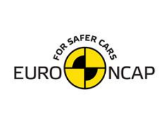

Euro NCAP TB29, certified suppliers for official Euro NCAP testing (Nov 2019)
This document compares certified and widely used belt driven propulsion systems with those that are not used in official Euro NCAP testing and reviews their suitability, capability and performance.
Belt Propulsion systems
Euro NCAP testing is carried out exclusively using belt driven pedestrian targets such as those supplied by AB Dynamics.
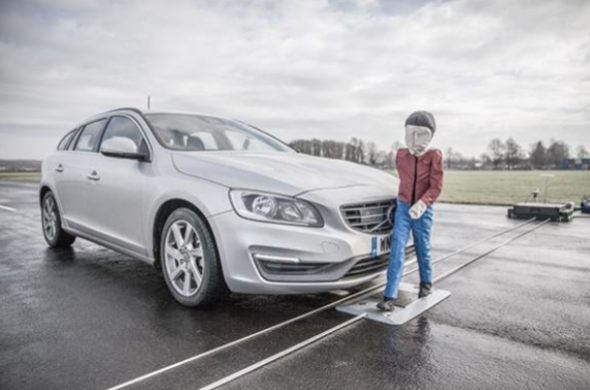
AB Dynamics’ belt driven pedestrian test system
The belt driven system propels sleds that can carry pedestrian or cyclist dummies. A single-belt option is available to allow for motion parallel to the subject vehicle. A powerful motor is used to achieve the required accelerations and velocities for both pedestrian and cyclist tests. Accurate positioning is guaranteed by virtue of a precision encoder measuring the motor angled used to move the platform and belt.
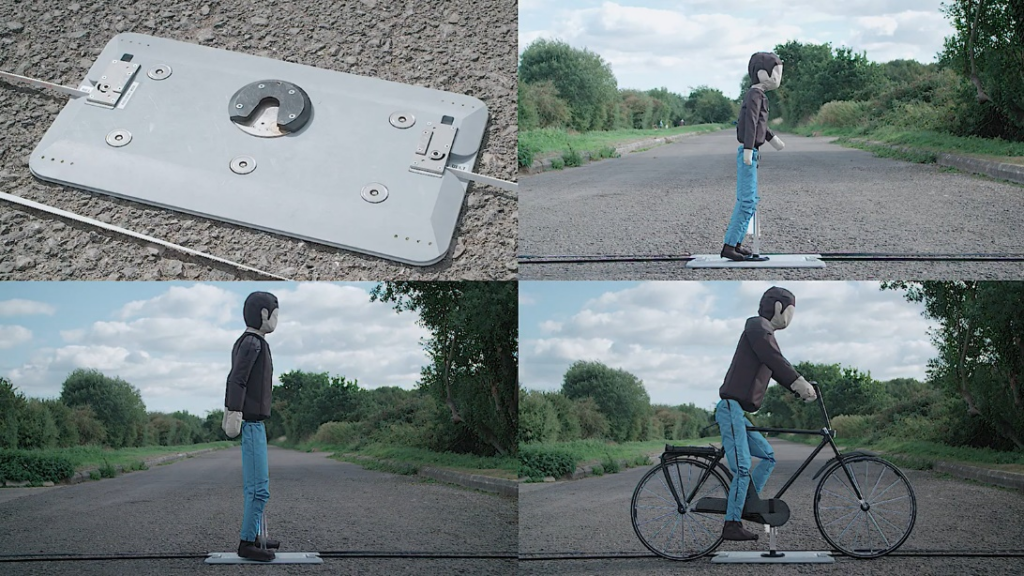
The advanced solution meets all of the requirements of Euro NCAP’s test protocol for AEB VRU systems
Overhead Gantry Systems
Some of the first pedestrian tests were carried out using overhead gantries. The pedestrian dummy being suspended from an overhead and motorised carriage that in turn can be controlled to move across the roadway to represent pedestrian motion.
The following attributes make this approach unsuitable for Euro NCAP testing:
1) Dummy is not in contact with ground – The dummy appears to be floating above the ground creating an unrealistic objective for camera detection and depth perception.
2) Fixed position – the fixed position of a gantry system prevents the flexibility needed to run the pedestrian target both laterally and longitudinally along the road path. As test procedures have developed to encompass junctions and intersections, portable propulsion systems have a considerable advantage.
3) Limited travel – the travel of a gantry system is limited by the infrastructure and cannot be easily extended.
4) Risk of test specific optimisation – the gantry is easily detected by vehicle sensors and could potentially be used as a cue that the vehicle is in a test environment. By using a sensor ‘invisible’ propulsion system test houses avoid this risk.

Pedestrian Arm Concept
A propulsion system has been proposed that makes use of larger vehicle sized platforms and utilises a rigid arm ‘pedestrian arm’ attached to the propulsion system. The concept is not listed as certified in Euro NCAP’s technical bulletin TB29 and is not used and not approved for official Euro NCAP testing.
Pedestrian arm concept attached to large vehicle target platform:

The following attributes make this approach unsuitable for Euro NCAP testing:
1) Poor position accuracy – By using a long extension arm the position accuracy of the dummy can not be precisely measured or controlled. Euro NCAP protocol requires position measurement accuracy to within 3cm. However the position of the dummy has to be calculated and is dependent on not only the position accuracy of the platform, but also the heading accuracy from the platforms GPS measurement system. Heading accuracy from GPS derived measurement systems is poor at low speeds and this concept is therefore subject to considerable position measurement error at the dummy.
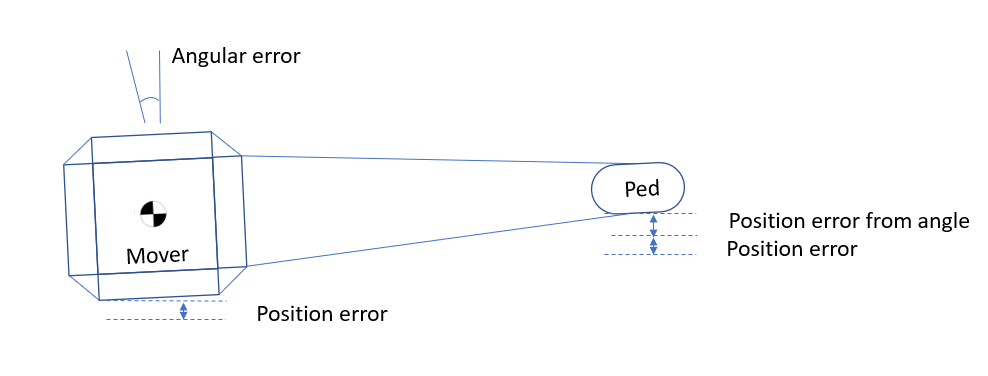
2) Large moving object in test area:
The Euro NCAP VRU test specification defines that:
“6.3.1 Conduct testing such that there are no other vehicles, highway infrastructure (except lighting columns during the low ambient lighting condition tests), obstructions, other objects or persons protruding above the test surface that may give rise to abnormal sensor measurements”
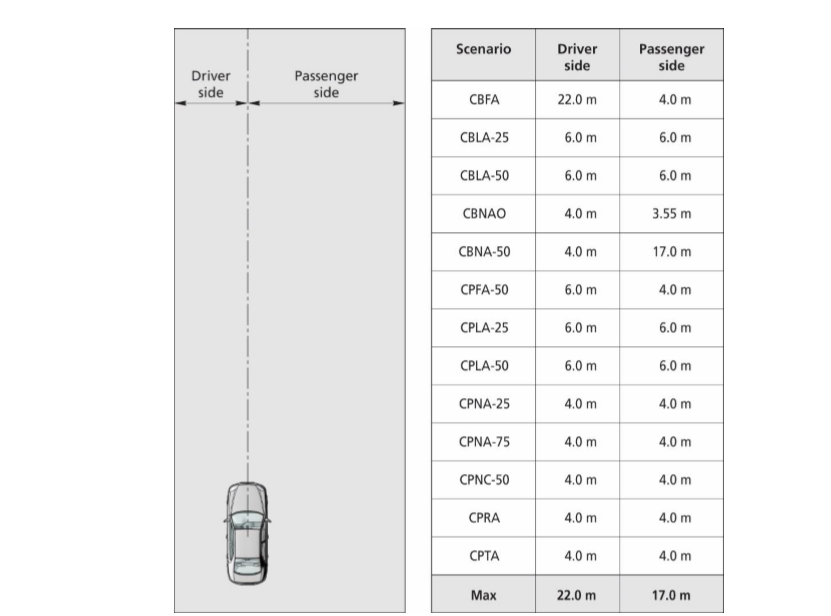
The presence of a large moving propulsion system connected by long arm would therefore be contrary to the test procedure.
3) Limited or insufficient clearance to adjacent obscuration vehicles (Euro NCAP CBNA)
Euro NCAP testing requires close passing to adjacent obscuration vehicles. The use of large moving propulsion systems leaves insufficient clearance to safely perform these tests.
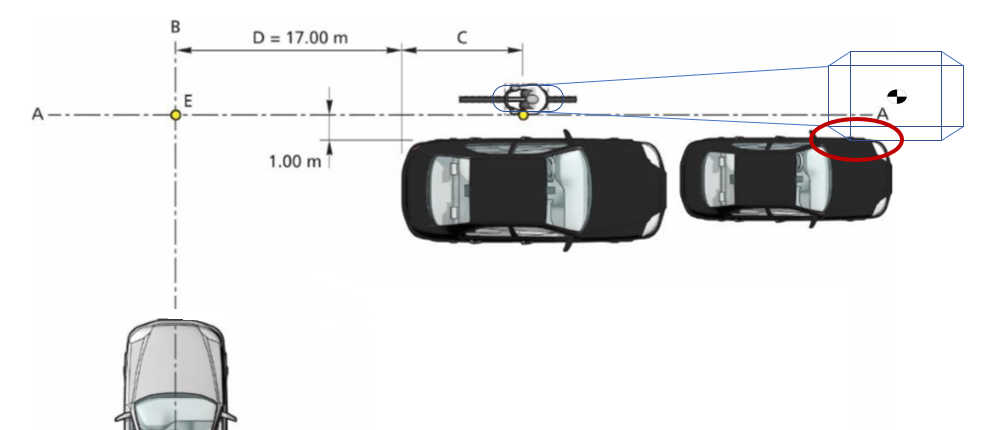
Insufficient clearance to adjacent obscuration vehicles (highlighted in red)
Conclusions
Official Euro NCAP testing is carried out using belt driven systems manufactured by either AB Dynamics and just one other supplier. The testing can be viewed in the video records stored on Euro NCAP’s website: www.euroncap.com
Although a variety of pedestrian propulsion systems are available on the market. The belt driven propulsion systems listed in Euro NCAP’s TB29 remain the only suitable and compliant solutions for carrying out Euro NCAP VRU testing according to the procedure at the current time.
Although alternative propulsion systems may be used and suitable for some specific test cases, they are not generally accepted for manufactures in-house development, Euro NCAP pre-tests or preliminary NCAP testing. This is because manufactures, sensor suppliers and test houses need to have the reassurance that their test methods closely match the methods employed in official Euro NCAP testing.

